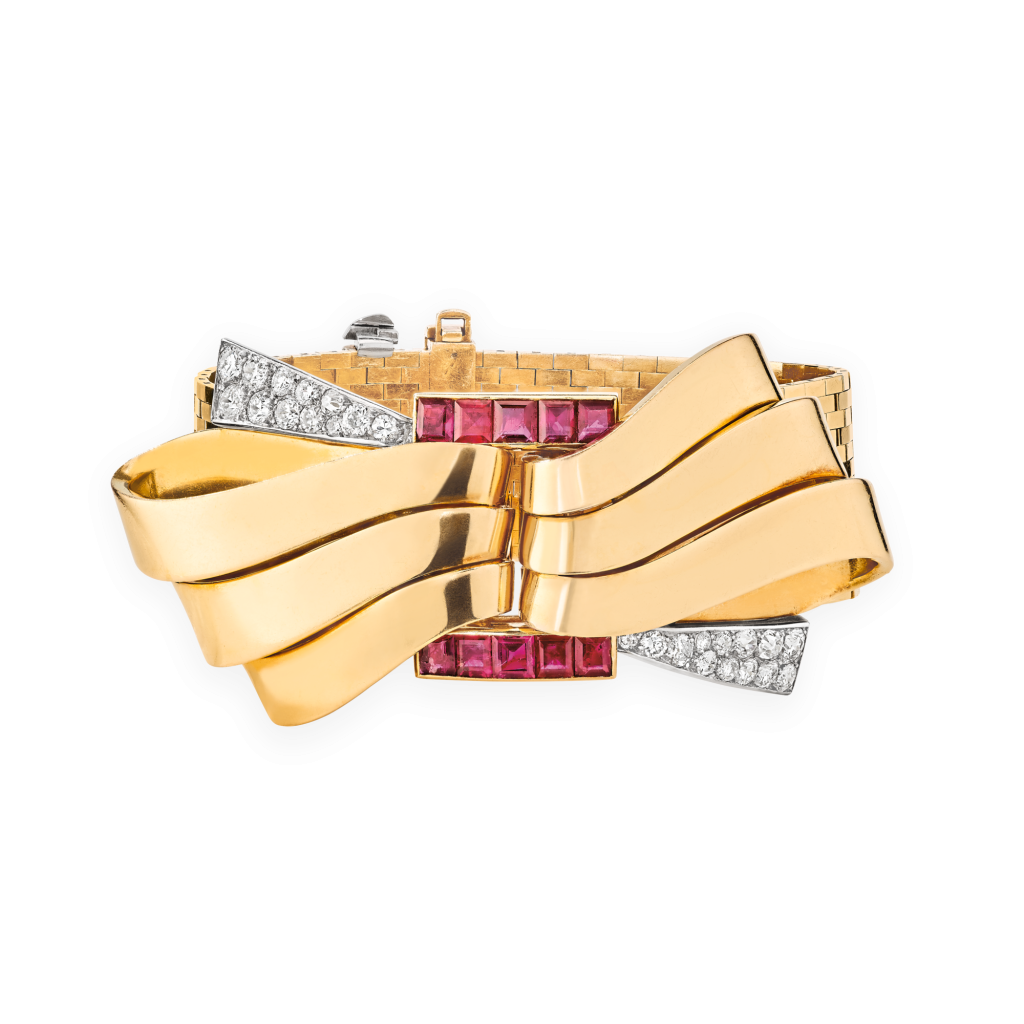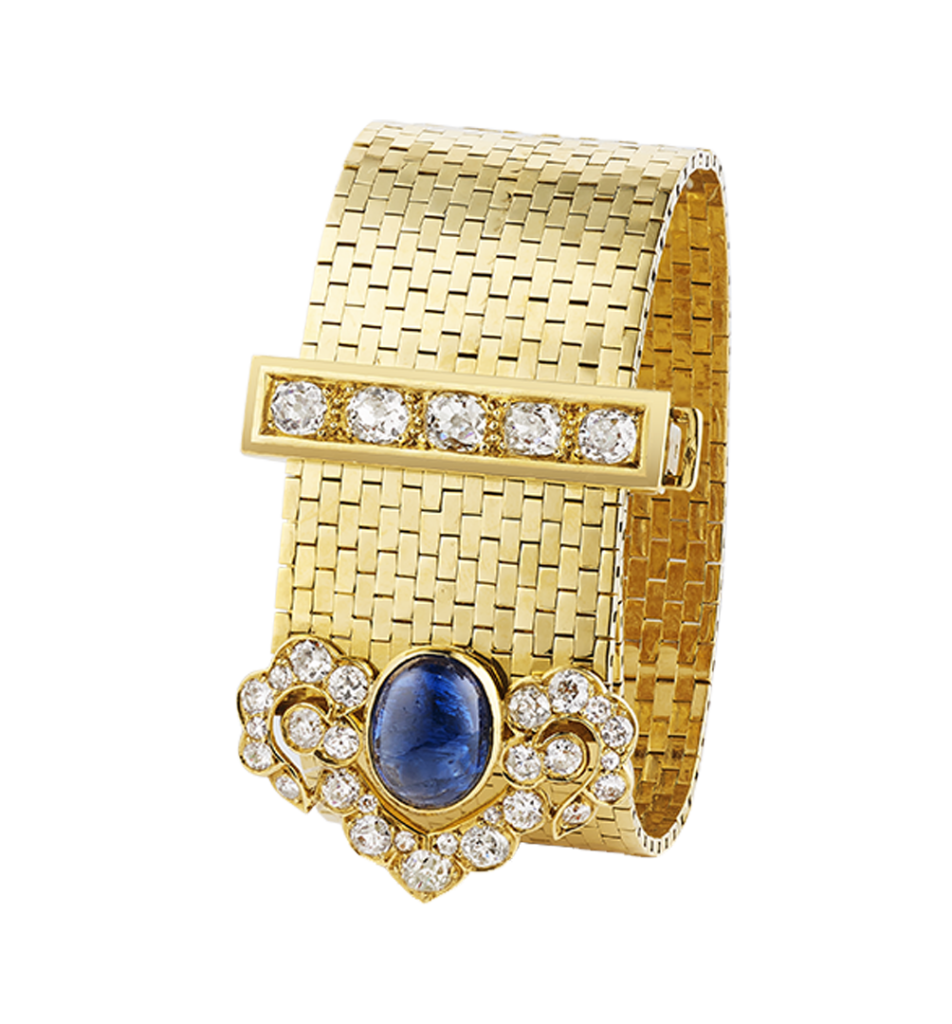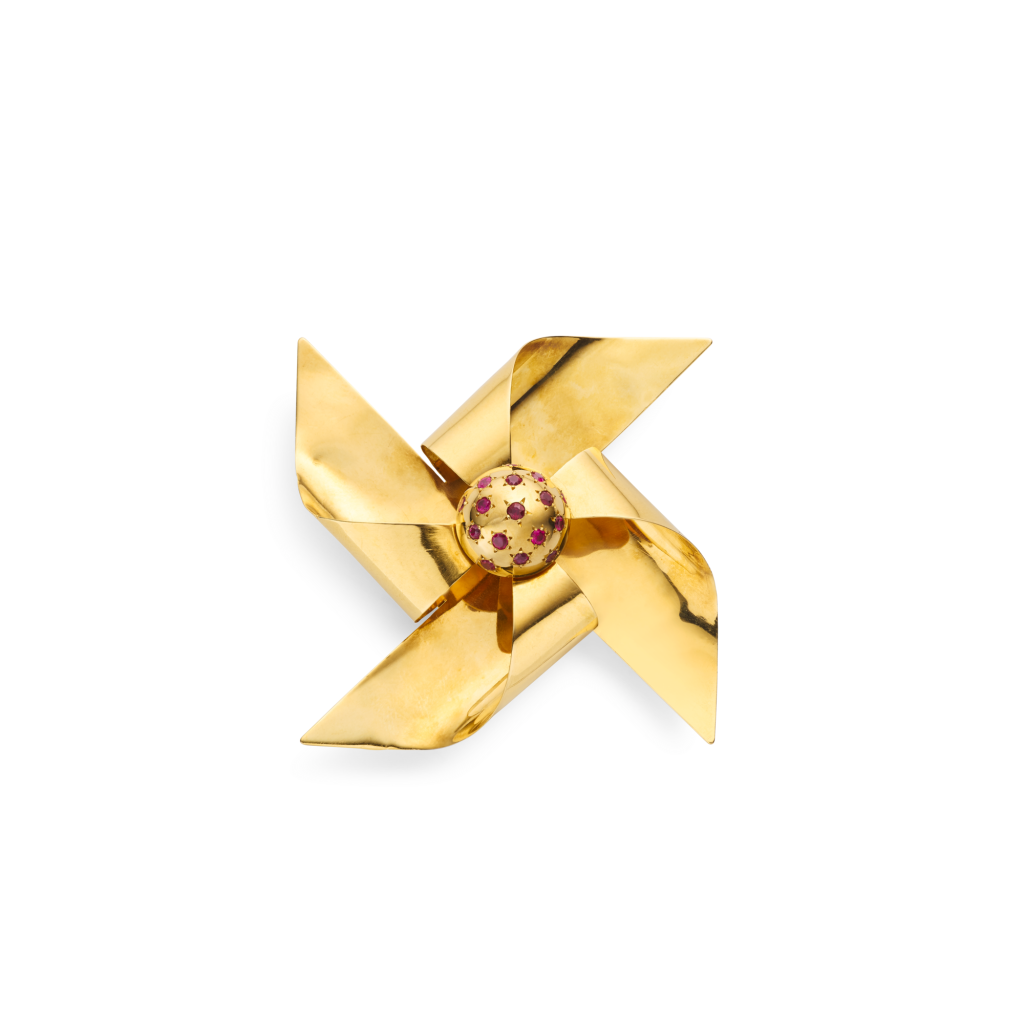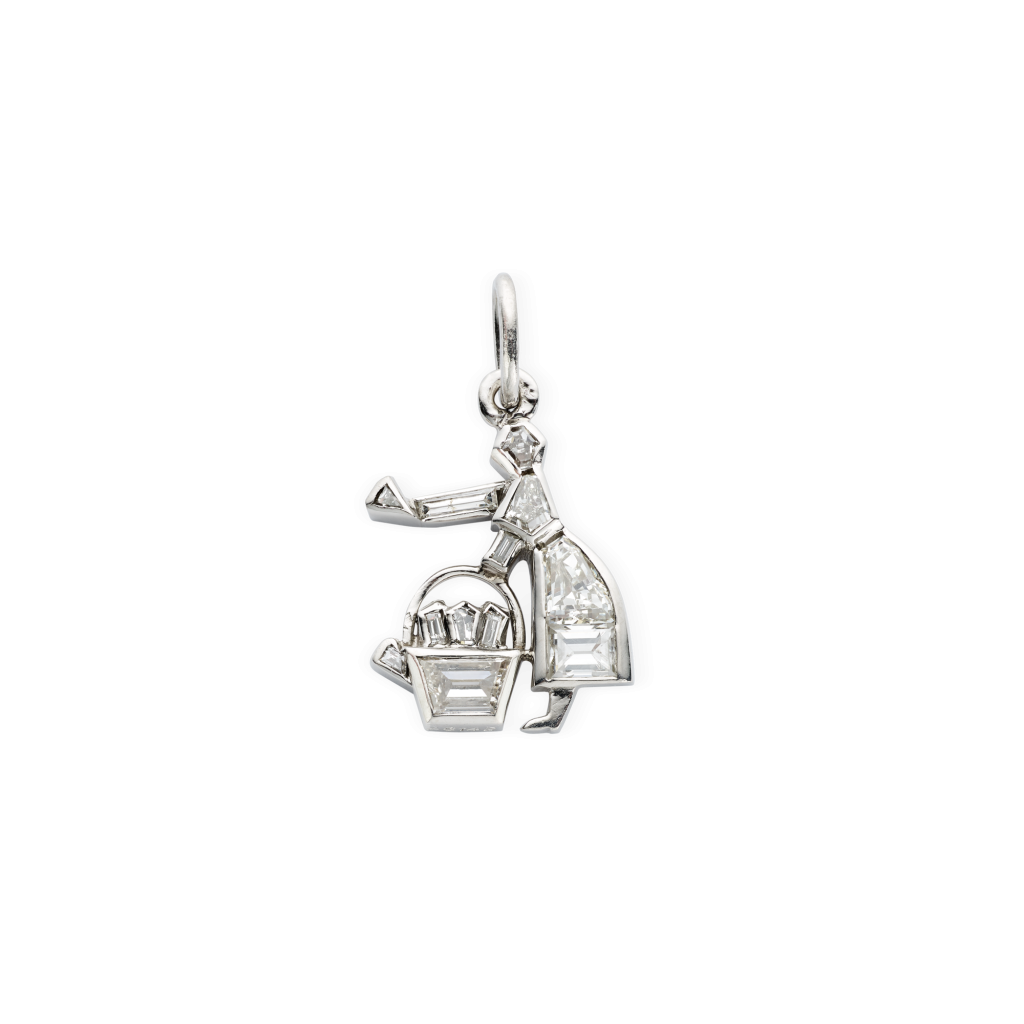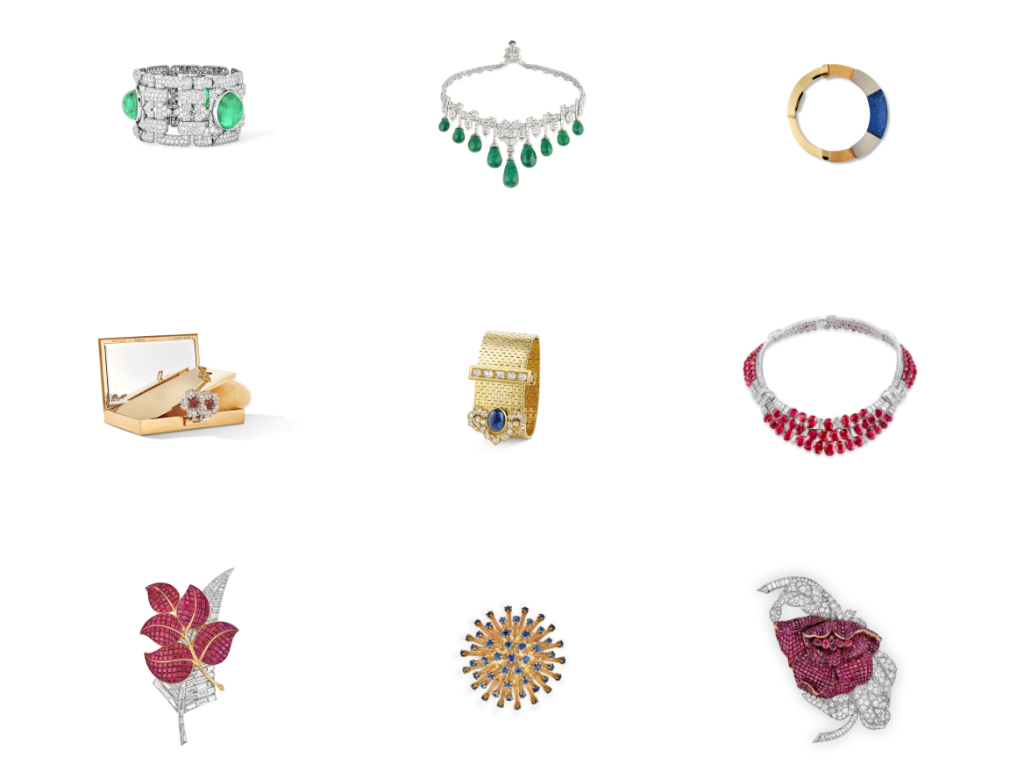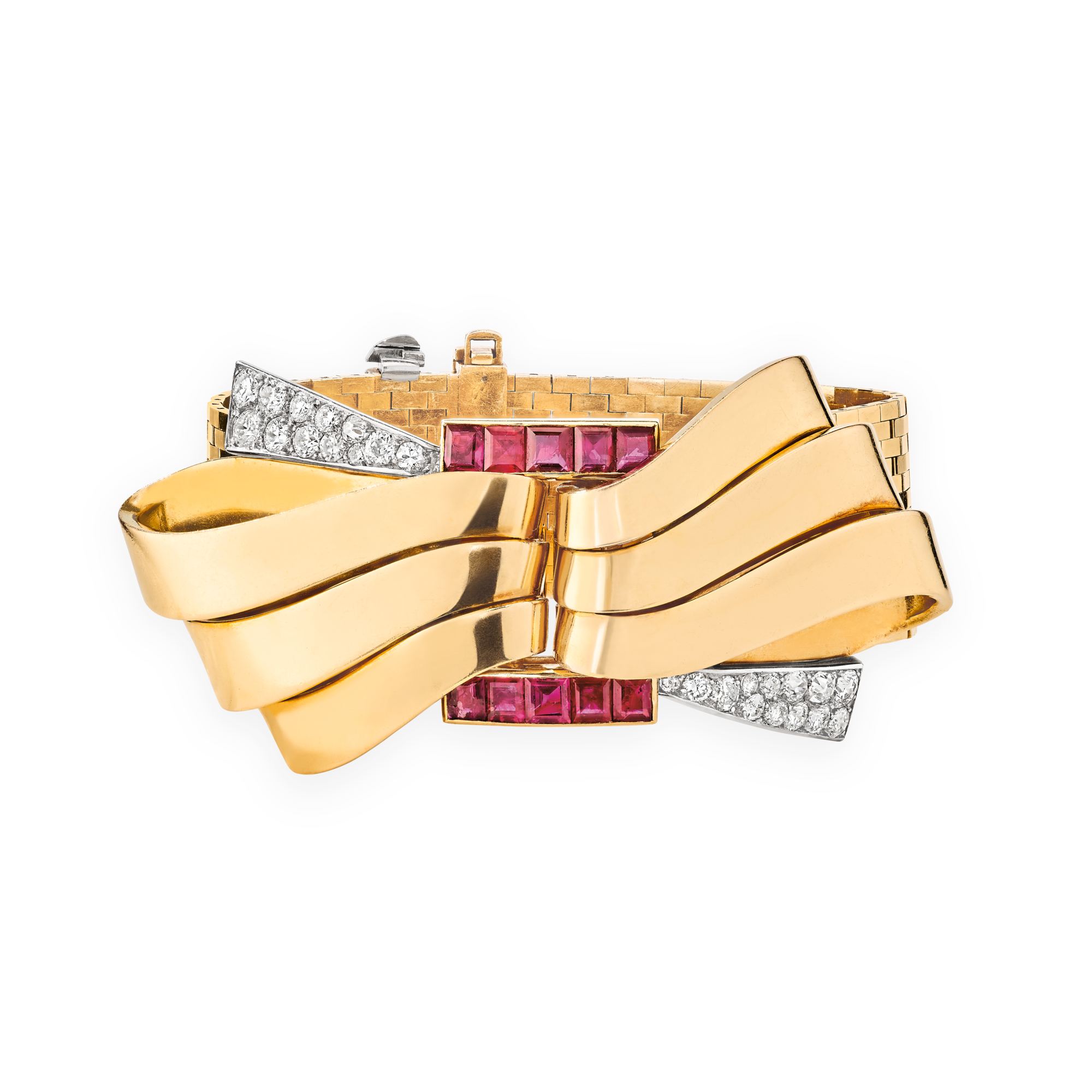
Ludo bracelet

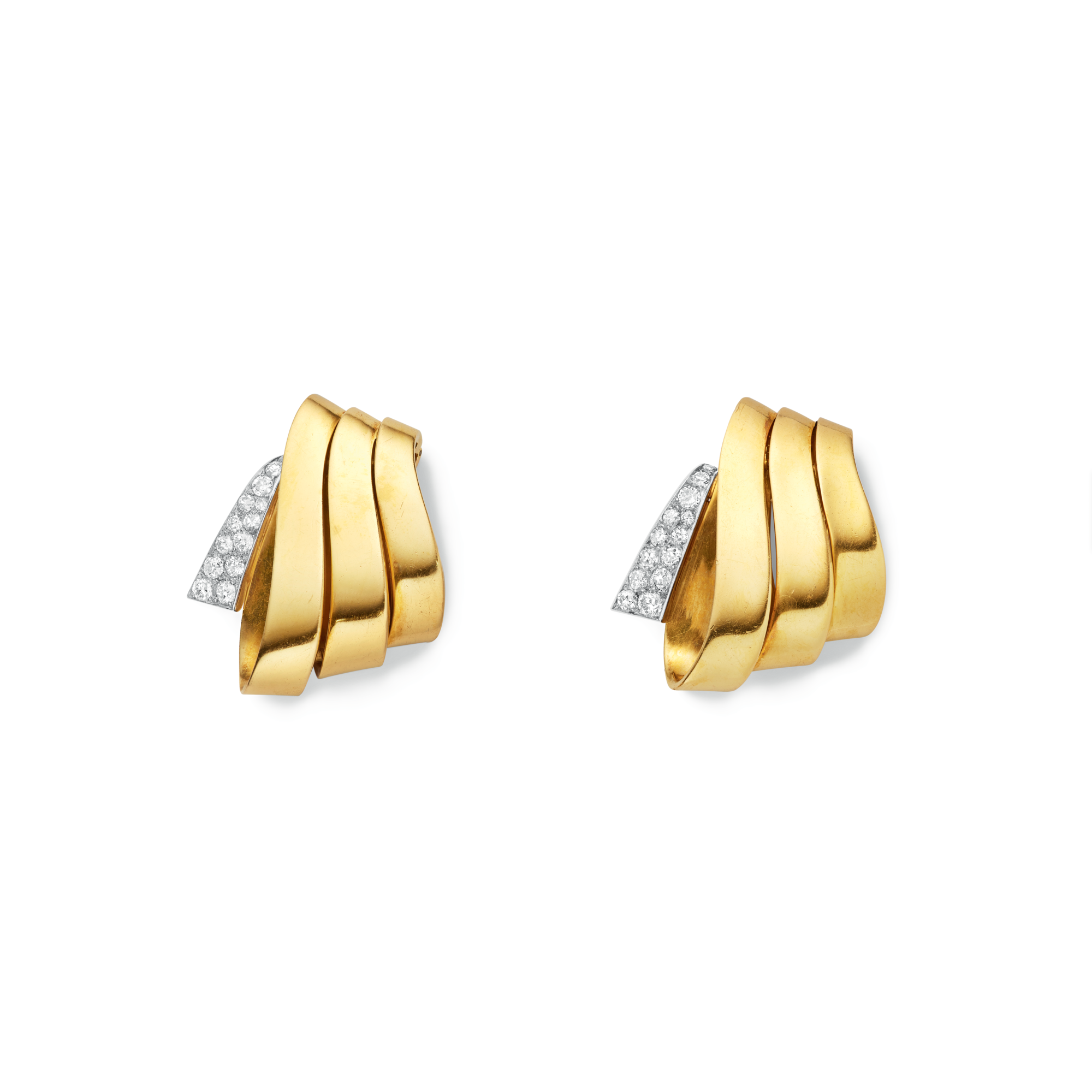
Creation details
- Creation year 1937
- Stone Diamond
- Stone Ruby
- Material Gold
- Material Platinum
- Usage Bracelet
- Dimensions 65 × 30 mm
This bracelet is one of many variations of the Ludo series, with its round-the-wrist element in “Ludo fabric”—a yellow gold brick-pattern mesh with the addition of a quadrangular buckle set with calibrated rubies.
Six ample yellow gold ribbons billow outwards in a fluid motion from the middle of the buckle, three either side, forming a bow. The ends of the bow are formed of platinum pave-set with brilliant-cut diamonds, one on each side of the buckle. Like the early Ludo bracelets, this one is fastened by the two overlapping ends of the bracelet part, one decorated with a row of calibrated rubies, the other with pave-set diamonds.
A singular bracelet
This particular variation of the Ludo bracelet stands out for the attention given to the ornamentation in the center of the bracelet rather than that of the fastening. This feature can be found in two other bracelets. The first is an adaptation in white diamond jewelry that retains the six ribbons, in baguette-cut diamonds in this instance, but does away with the buckle to lighten the effect of the ribbons. The second is closer to the model shown here but with calibrated rubies on the stylized ribbons and bow rather than the buckle.
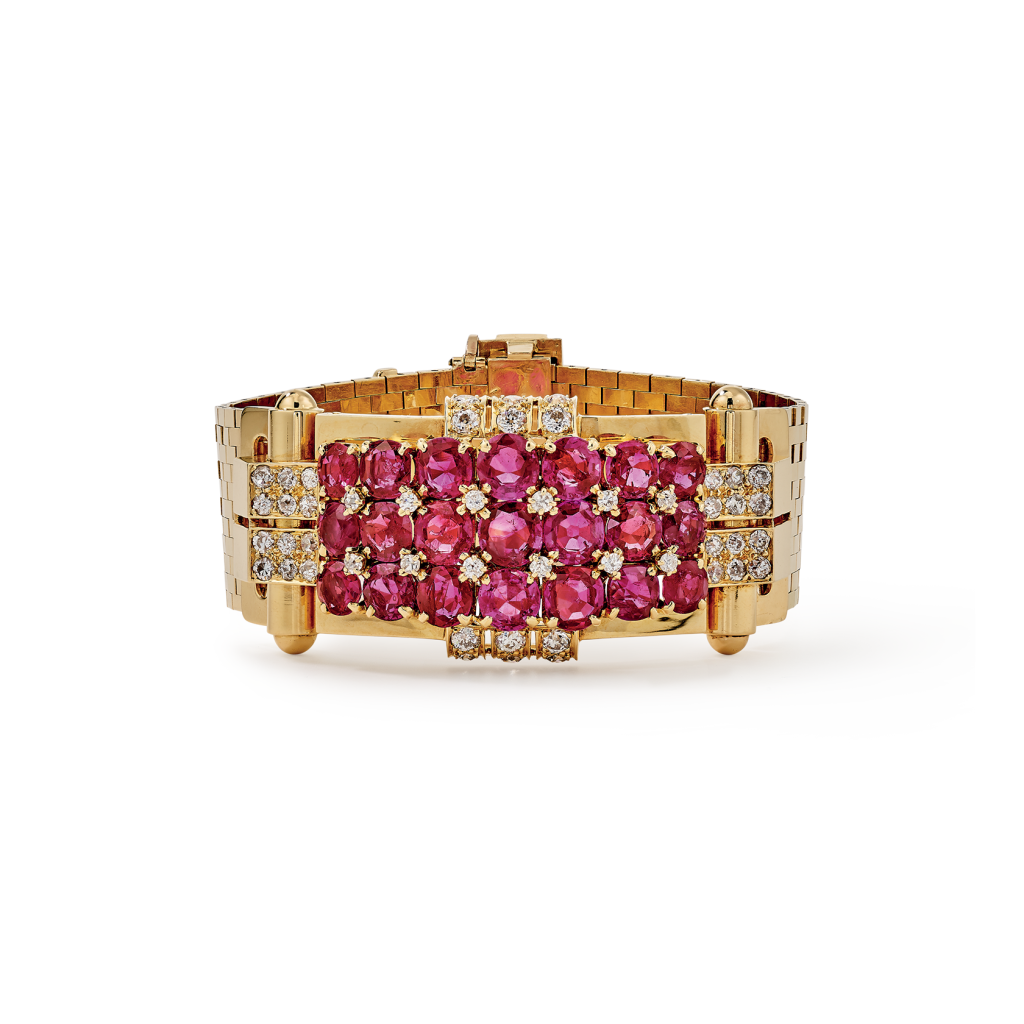
Transformable into a clip
The present model has an additional advantage not found on the early Ludo bracelet, namely that it is transformable. Both sides of the bow can be detached to form clips, in keeping with the taste for transformable jewelry that was particularly prevalent in the 1930s. That said, this transformable version of a Ludo bracelet is rare and the Patrimonial Collection only has one other example, also from 1937. The latter is decorated with two scroll-shaped detachable clips that play with the contrast between yellow gold, pink gold, and platinum pave-set with diamonds.
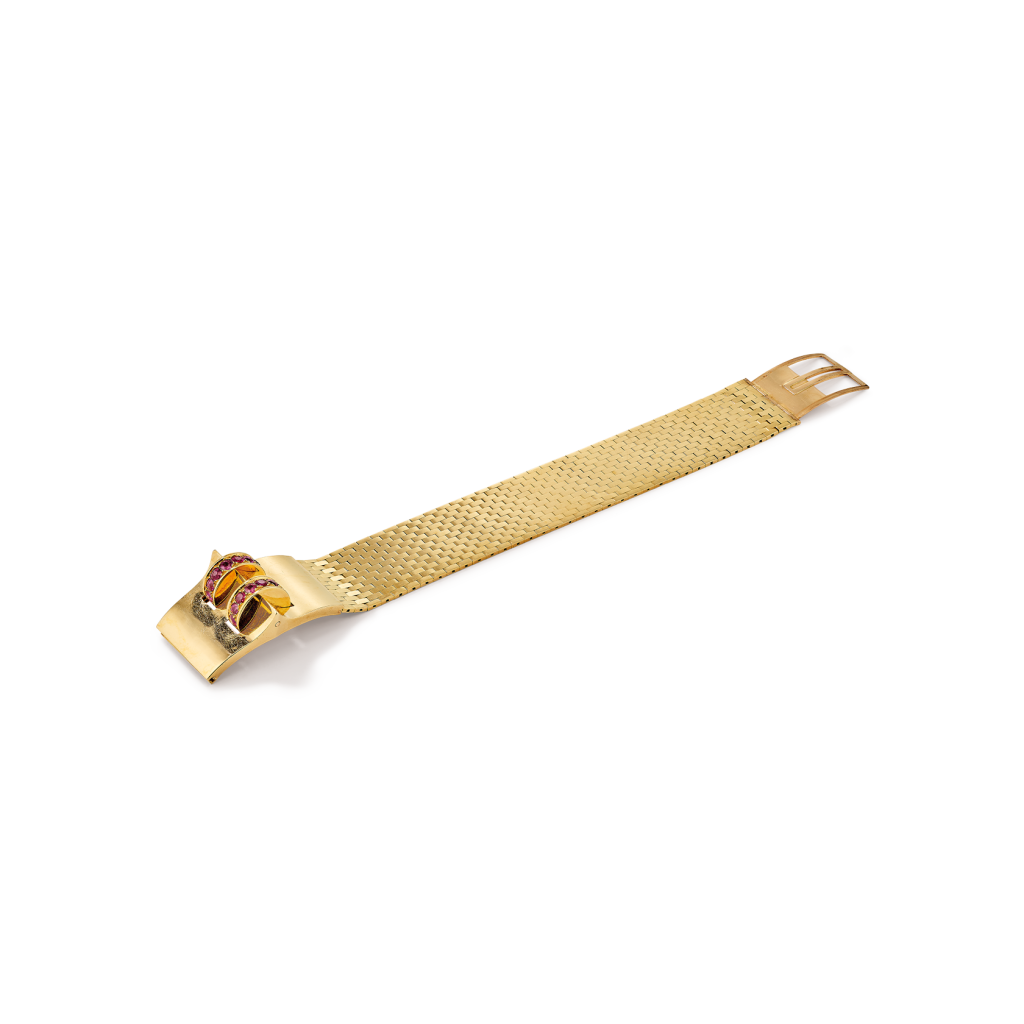
In clip form, the ribbon’s stylization is all the more evident. With Modernism, the bow became simpler but gained in volume. “Thickness without heaviness is obtained in several ways. It depends upon the way in which the material itself is worked: rolled, folded, or forming shell shapes. One would think it is some sort of malleable fabric. One expects to see it moving or come to life.”1Anonymous, “Fleurs et reliefs,” Vogue (August 1936): 21.
A creation heralding the style of the 1940s
This 1937 revisited and enhanced version of the 1935 Ludo bracelet foreshadowed techniques and stylistic codes that would be developed the following decade. It illustrates the improvement of transformable jewelry, which culminated with the Passe-Partout, and stylization using polished yellow gold strips that were to become particularly popular for bows during the 1940s.
To go deeper
